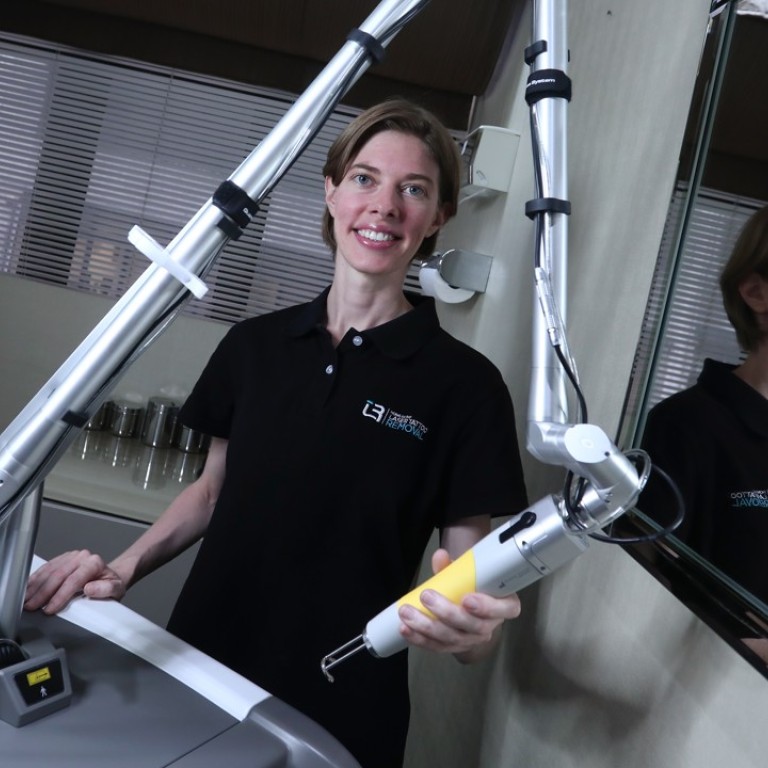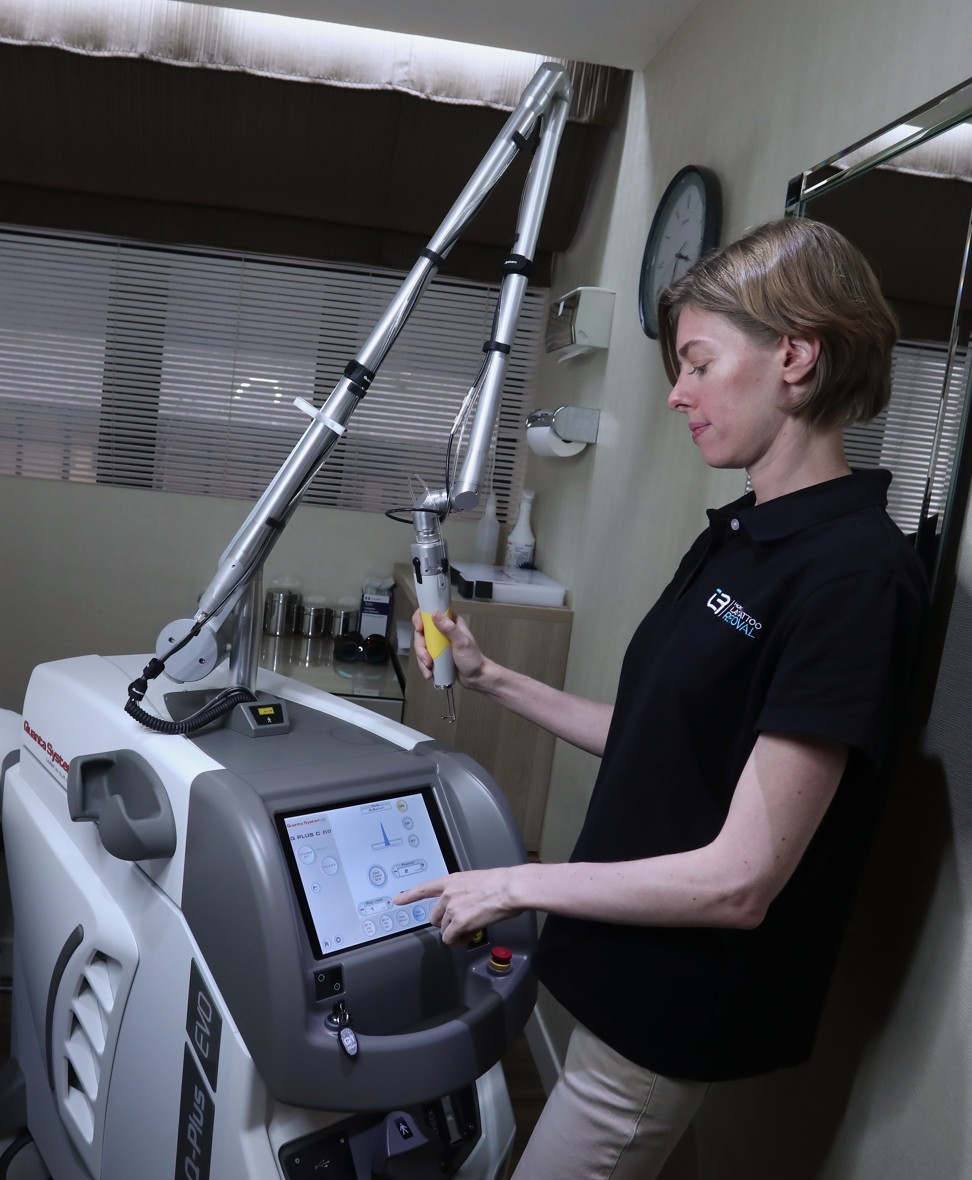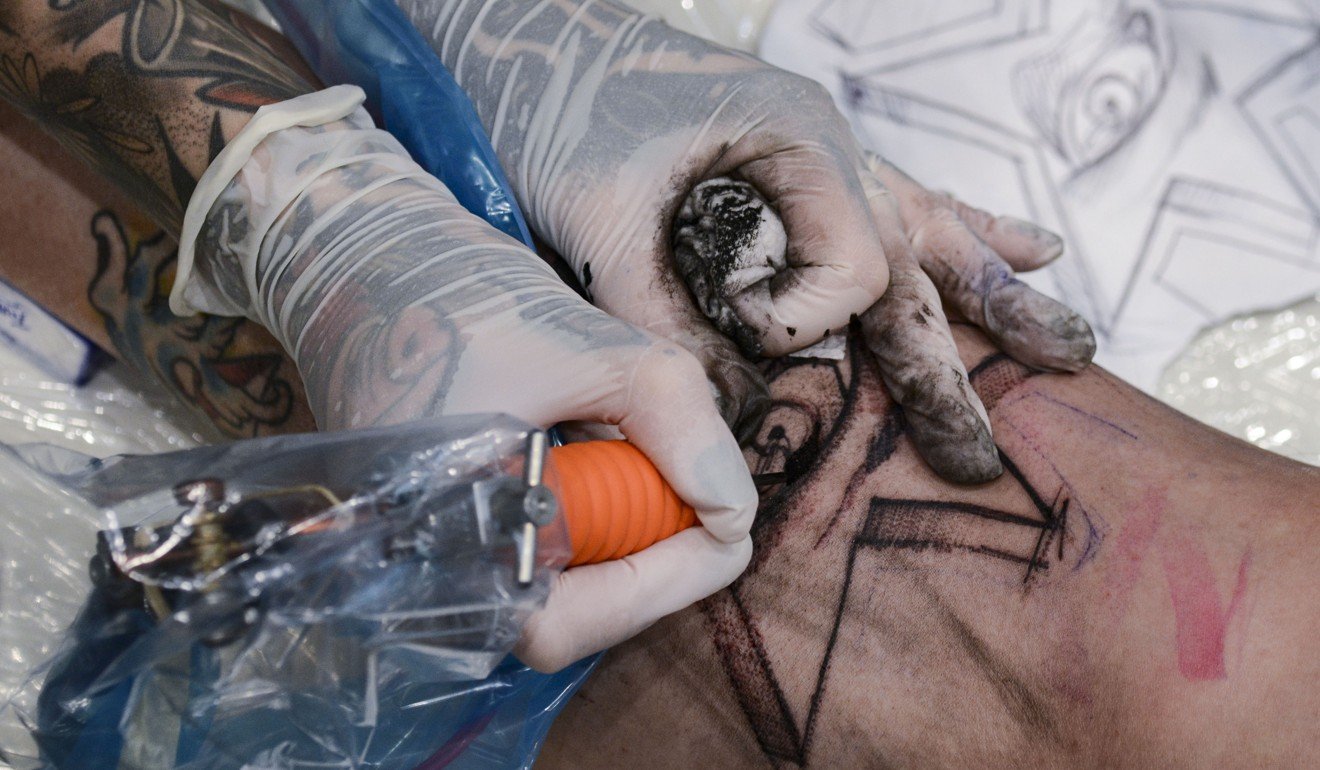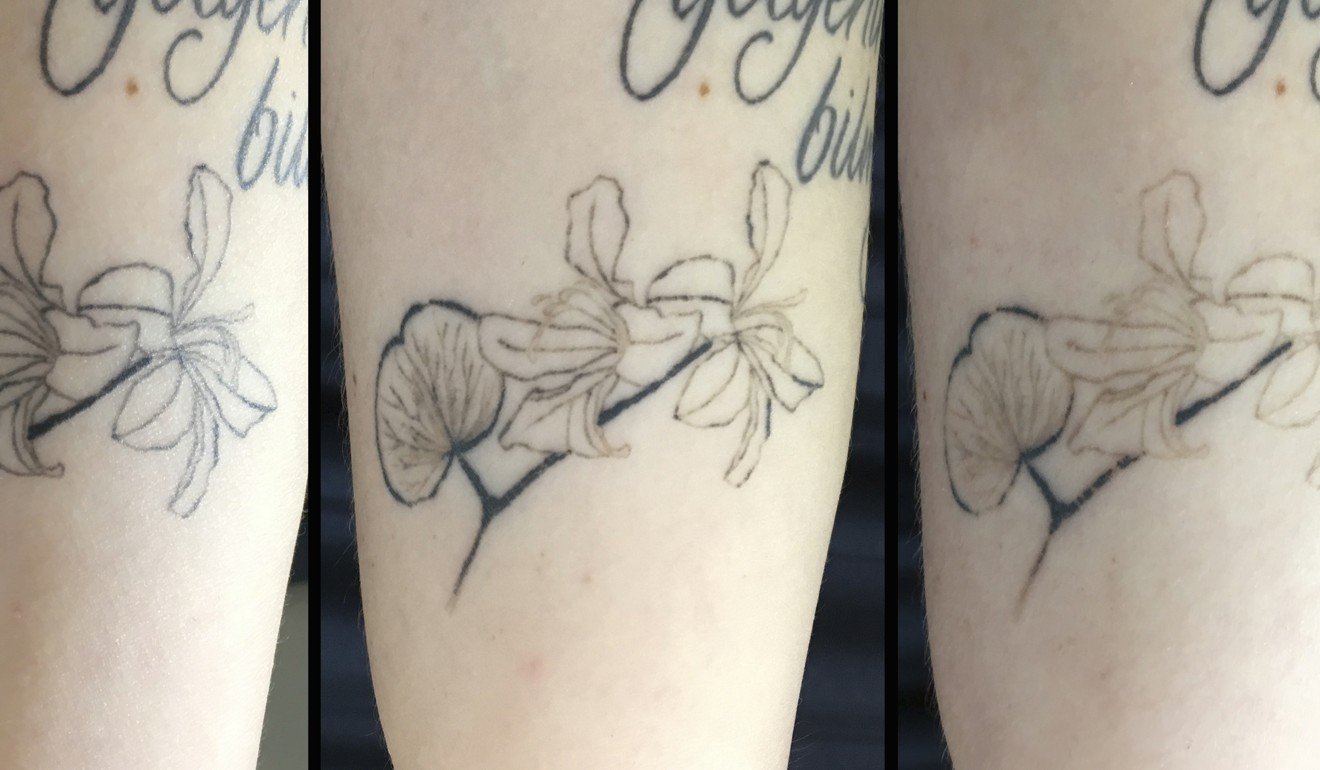
Why laser tattoo removal is on the rise – and why you should think twice before getting inked in the first place
Denise Winter, whose partner is a tattoo artist, specialises in laser tattoo removal. She tells us demand for it is growing in Hong Kong and the reasons people give for wanting them erased
Denise Winter doesn’t always learn why her clients have fallen out of love with their tattoos. As her laser zaps away their body art in her Hong Kong Island studio, she won’t push them to tell their stories, but her friendly nature often makes them feel comfortable enough to open up.
“I try to create a safe space in which people feel like they can share if they want. It’s part of the process,” she says, adding with a laugh: “Usually the people who got the tattoo when they were drunk are the ones that will tell you the whole story.”
The rise and rise of the tattoo in China
Winter runs Hong Kong Laser Tattoo Removal, one of several clinics that have emerged in Hong Kong in tandem with tattoos’ increased popularity. It specialises in removing ink entirely or fading it enough for a cover-up.
The practice involves targeting ink beneath the skin with a highly concentrated laser beam and takes training before someone is qualified to operate lasers safely. Originally from the US state of Iowa, the 36-year-old former maths teacher moved to Hong Kong in 2009 and taught English before embarking on her current profession. In an intriguing twist, Winter is engaged to a tattoo artist, Chiu Chan, who has operated his own studio in the city’s Mong Kok neighbourhood since 2010.
Sensing a growing demand for tattoo removal in the city, she decided to retrain as a laser specialist.
“At first it was a joke, but then we started seeing people coming to the studio who’d gotten laser treatment. The results weren’t that good. I started to realise that the treatment that was affordable for most people was not effective, and that the treatment that was effective was too expensive for many people. I thought there had to be a place that could do both,” she says.
By 2012, Winter had been awarded certification by a college in Texas specialising in laser tattoo removal. She originally set up shop alongside her partner, who is also qualified in laser safety, at Chiu Tattoo before outgrowing the space and moving in 2015 to her current clinic in Sheung Wan.
Unlike her fiancé, who, unusually for an artist, does not have any tattoos of his own, Winter has two, one of which she is removing – a dolphin and red moon design on her ankle. After several treatments, the original design is impossible to distinguish.
Like the many individuals who pass through her business, Winter acquired the tattoo when she was younger, yet feels it no longer represents her personality.

“When I was 18, I went to a tattoo shop with a friend not planning to get one, and came out with this,” she says. “At the time I loved it; now it doesn’t bother me, but it doesn’t have any meaning.”
I’d definitely think my next one through a bit more
Among the many reasons Winter hears for removal, two of the most popular are the demise of a relationship and employers’ restrictions. For schoolteacher Don, who doesn’t want to reveal his last name, a Jaws-inspired tribal shark design on his arm was a way of moving on from an illness he battled during his 20s.
“When I came out of the other side, I decided I was going to do everything I wanted to do, that I had put off. I wanted to get something that represented the fear I felt when I was sick [and] the fearlessness I had when I came out on the other side,” he explains.

Although the decision was not prompted by his employer, Don was concerned that his students’ parents would think badly of him due to his body art. “I figured it was going to be on there forever. Then I outgrew it and regretted it. When I wore a short-sleeved shirt, the bottom part would hang below the cuff and I didn’t feel it was very professional. In Hong Kong culture a lot of people associate tattoos with triads.”
The shark was the first of two pieces undergoing treatment by Winter: the second was the simplified Chinese character for “evil” on Don’s upper back. “It’s sort of embarrassing,” he says. “I picked it to remind me to never get back with an ex-girlfriend after I came to the conclusion she was an evil person.”
Confident England fan gets ‘World Cup winners’ tattoo on his belly
“In removing a tattoo, people will tell me – even after their first treatment when the tattoo is still very visible – they feel relief,” Winter says. “Some people have a very personal tattoo that they got during a certain time in their life and they want to let go of that.”
Winter treats “five to 10” people per day, and says that demand for tattoo removal is growing. “It’s changed a lot over the past couple of years because tattoo removal has improved and people are more open to the idea. It’s a lot safer now and the technology is more advanced. It’s becoming more common so more people are hearing about it. They might have had a friend who had it, or met someone on a junk boat who did.”

Once taboo, a marker of gang affiliation or unsavoury characters, tattoos have taken off, especially among young people, though older generations still have some reservations.
Inking up at China international tattoo show
“I have younger Chinese clients whose parents make them remove their tattoo and they’re just going to get another one someday,” Winter says. “Their parents really dislike [tattoos] – in their eyes, there is a kind of person who gets tattoos and they’re bad people. For the younger generation, it doesn’t mean anything like that.”
The artwork is naturally faded by the body over time, but laser treatment speeds up this process, breaking down ink particles until they’re small enough to be removed by white blood cells. The skin is given a chance to heal in between sessions and once most of the art is faded, the body continues the process.

Different colours of ink require lasers of different wavelengths. Black tattoos tend to be the easiest to remove because the wavelength used targets the pigment more precisely and reaches the deepest ink particles while being gentler on the skin.
I’m here because sometimes forever is a long time
The sensation is often described as the feeling of an elastic band snapping repeatedly against the skin, and is said to be more intense than being tattooed, though a single session is usually completed within a few minutes.
Winter says most people undergo eight to 10 sessions, which start from HK$800 (US$102) each (based on the size of the tattoo), but denser designs can take up to 14 visits. Swelling, redness and residual pain are still part of the process, though advancements in laser technology mean it is now safer, more efficient and yields better results than in the past.
After three sessions, Natalie, 22, another of Winter’s clients, is pleased with how her ink is fading and is planning a cover-up piece. The line drawing on her arm of Hong Kong’s national flower, the bauhinia, was the result of a drunken visit to a Mong Kok studio where she and three friends got matching tattoos last year.

“After about 10 months I realised I wasn’t happy with it – it’s quite a nice tattoo, it’s not ugly or offensive, but I want to tattoo more of my arm in the future, and it’s in the way of any designs I have in mind,” she says.
I didn’t feel it was very professional. In Hong Kong culture a lot of people associate tattoos with triads
Initially unaware of how the removal process would work, she was relieved to find it wasn’t as invasive or painful as she’d been expecting. “I thought it would be like surgery but it wasn’t even close to that. It was absolutely fine … There was about a minute of the laser. It was like an electrical feeling, rather than a burn. Then it’s over.”
However, she adds: “I’d definitely think my next one through a bit more.”
The increasing ease of removal means that perceptions of tattoos’ permanence is shifting. Winter sometimes sees clients inquiring about removal on the same day their tattoo was applied, though she usually suggests that they wait to make sure they are certain.
“Tattoos when you first get them are going to be the brightest and you’re like, ‘What have I done?’” she says. “But after a month or so and it’s healed you might grow to like it. People change their minds.”
Why more and more people in Asia are drawn to getting tattoos
Winter’s advice for a tattoo that’ll stand the test of time is to stick to classic designs in black or red, avoid trends, and choose something that will be meaningful for years to come.
“The tricky part is knowing who you’re going to be in the future,” she says. “I think someday tattoos will be disposable but we’re not there yet.”
Winter says she believes “tattoos should be looked at as a forever thing”, before adding: “But then I’m here because sometimes forever is a long time.”

